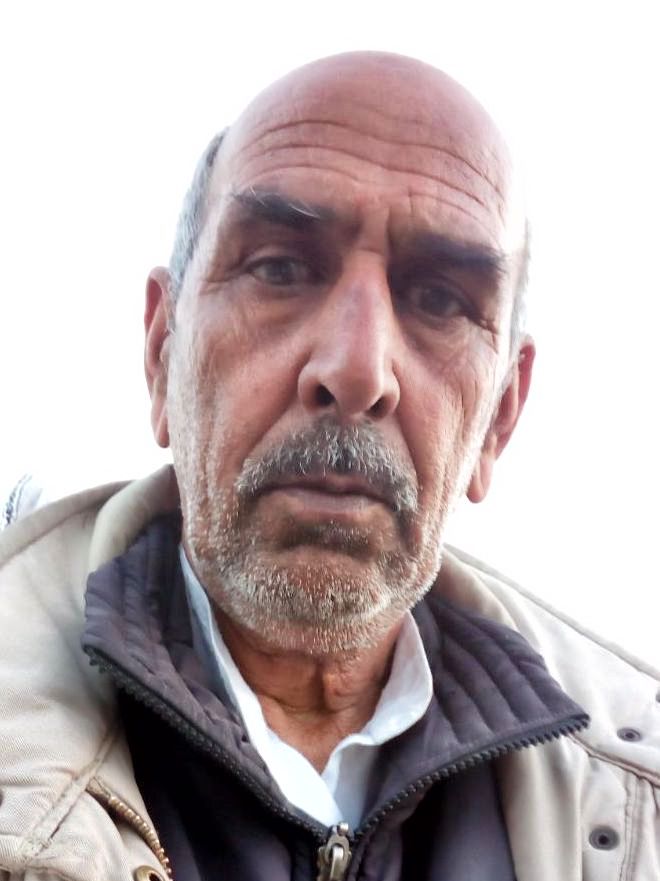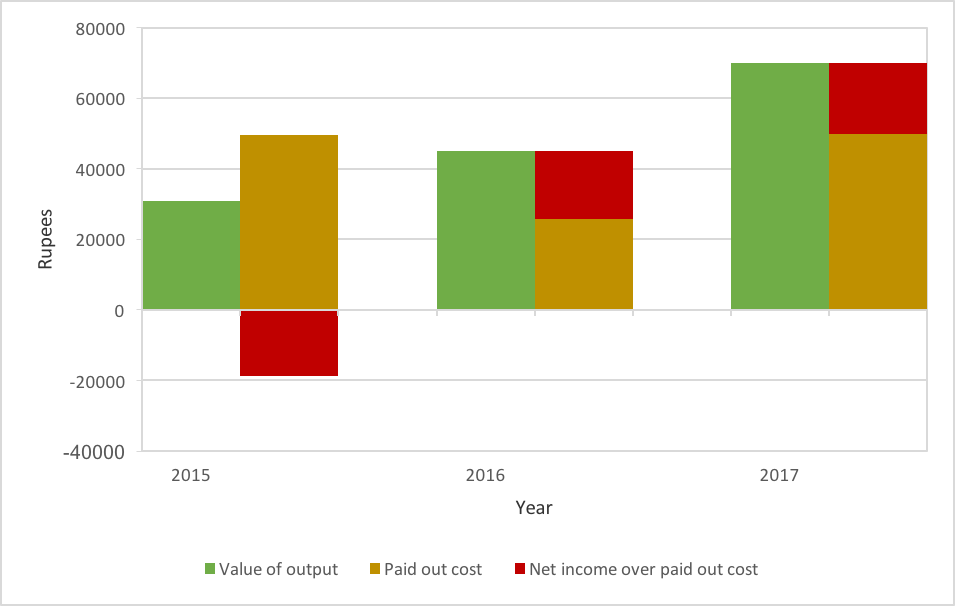Ramswarup Gopal is a cotton farmer from Fatehabad district, Haryana. For the last five years, cotton crop in Haryana, Punjab and Rajasthan has suffered massive damage because of whitefly infestation. In addition, farmers in the region also have to deal with lower yields due to spurious Bt cotton seeds being sold by suppliers.

Over the last decade, cotton farmers in most of India’s major cotton producing regions have shifted to using genetically modified (Bt and, second generation BG-II) varieties. A large number of Bt and BG-II varieties, developed using various varieties of cotton seeds, are in use in different parts of India. With increasing adoption of these expensive seeds, selling of spurious seeds by suppliers has become a major problem for cotton farmers. Another problem troubling cotton farmers is that while the new seeds are resistant to some pests, they are not resistant to a range of other pests. For the last five years, cotton crop in Haryana, Punjab and Rajasthan has suffered massive damage because of whitefly infestation. Whiteflies are sap-sucking pests that are also carriers for the cotton leaf virus disease. Presently available genetically modified cotton varieties are not resistant to sucking pests like whiteflies or to the cotton leaf curl virus.
Fatehabad, Jind, Hisar, Bhiwani and Sirsa districts constitute the cotton belt of Haryana. As per the land use statistics for 2014-15, these four districts produce 80 percent of Haryana’s cotton. During the Kisan Mukti Sansad held in Delhi on 20th-21st November 2017, Ramswarup Gopal, a cotton farmer from Dhani Gopal village in Haryana’s Fatehabad district, told us about problems he has faced over the last three years.
Dhani Gopal, with around 800 households, is located 7 kms from Bhuna block headquarters in Fatehabad district. It has a government primary school, a middle school for girls, a high school and a small government dispensary. Village lands have access to irrigation from Bhakra project’s Fatehabad Branch canal and numerous privately-owned electric tubewells.
Ramswarup, a farmer with 5 acres of irrigated land, is a leader of the All India Kisan Sabha (AIKS) in Fatehabad district. He is 67 years old and his wife is about 64. They have five children who are all married. They live with one son, a daughter-in-law and two grandchildren. While Ramswarup is a graduate, his wife is illiterate. But they have made sure that their children are all well-educated.
Ramswarup owns 5 acres of canal and tubewell irrigated land. Usually, during kharif season, he grows cotton and parmal paddy, both of which are cash crops, and jowar as a green forage crop for his livestock. During the rabi season, from November to April, he grows wheat, a part of which is kept at home for consumption and the rest is sold.
In 2015, Ramswarup planted cotton on 3 acres of land. That year, his cotton crop was badly infested with whitefly. Since expensive BT cotton seeds he used were not resistant to whitefly, he had to spend over Rs. 5000 per acre on pesticides. Despite all this, his cotton crop was badly affected and he got a yield of just 2.4 quintals per acre. He sold the entire produce of 7.2 quintals for Rs. 30,960 to an adhati (commission agent) at the mandi in Bhuna. That year, the value of cotton he sold was Rs. 19,000 less than the expenditure he had incurred in purchasing inputs and hiring workers. This was only partly compensated for by positive returns from paddy (Rs. 15,000 over the paid-out expenditure), which he had cultivated on 1.5 acres.
Since he did not even recover his total paid out expenditure for kharif crops, he had to borrow Rs. 1.5 lakhs from his adhati to cover the loss and meet his household requirements. Adhatis advance loans at a very high interest. In his case, he had to pay an interest of 2 per cent per month on the loan. He also had an old loan, of Rs. 6 lakhs, taken in 2012 from Bhoomi Bandhan Cooperative Bank. Ramswarup continues to pay interest on both these loans, but has not been able to return any of the principal amount.
With high costs and the experience of whitefly infestation in the previous year, Ramswarup decided to plant cotton only on 1 acre in 2016 kharif season, // and keep 3.5 acres for paddy. In that year, when he chose to reduce the land under cotton cultivation, the yields were normal and cotton gave a positive return, at least over paid out expenditure, of Rs. 19,200 per acre. In comparison, return from paddy was only Rs. 11,500 per acre. At the time of cotton harvest in 2016, peasants had to also deal with demonetisation. For payments in cash, the adhatis paid Rs. 400 less than the market price of Rs. 4500 per quintal.
After getting marginally better returns from cotton in 2016, Ramswarup decided to increase the area under cotton cultivation. In 2017, he planted cotton on 2 acres of his land. However, 2017 has again turned out to be a bad year for Ramswarup’s cotton crop. He bought four packets of BT cotton seeds for planting over two crops. He had bought identical looking packets and paid the same price for them. All agricultural operations were done together on the whole land and the same inputs were used. However, while on one acre he got 10 quintals of cotton, on the other acre he barely got 4 quintals. There was no pest infestation on any of the two parts of land. Ramswarup is convinced that this year he was a victim of spurious seeds. Although all packets looked the same, he suspects that two of them were spurious and therefore did not give good yields. Once again, with low average yield, in 2017, he saved only Rs. 20,000 over paid out expenditure on two acres of cotton.

Figure 2: Value of output, paid out cost and net income of Ramswarup Gopal from cotton cultivation, 2015 to 2017 (Rupees)
Ramswarup’s experience of cotton cultivation reflects a typical situation that a vast majority of farmers face in contemporary India. In absence of public provisioning of good seeds, they are forced to buy expensive seeds produced by private companies. With a collapse of public extension services, input sellers, who have a vested interest in selling expensive inputs, are the only source of advice on how to deal with problems like pest attacks. Increasing integration with markets, particularly with global markets, has meant that it is impossible for an individual peasant, with limited ability to access and interpret information, to understand and predict market conditions. All of this has meant that even an educated farmer like Ramswarup, with 5 acres of very fertile and irrigated land, cannot get decent income from land year after year.
** Shreshtha Saraswat is a Research Fellow at Society for Social and Economic Research (SSER).
This was originally published on NewsClick.in.
